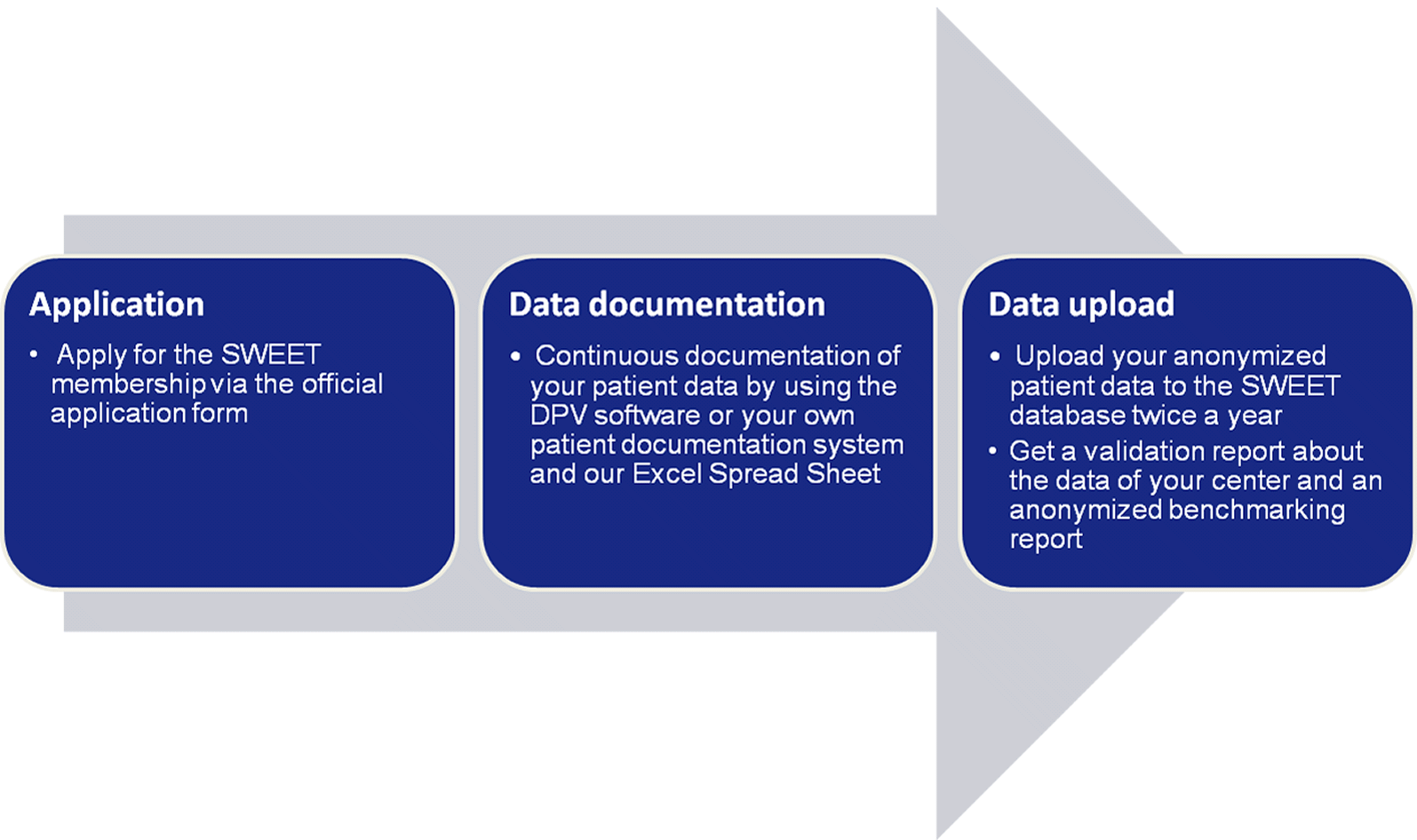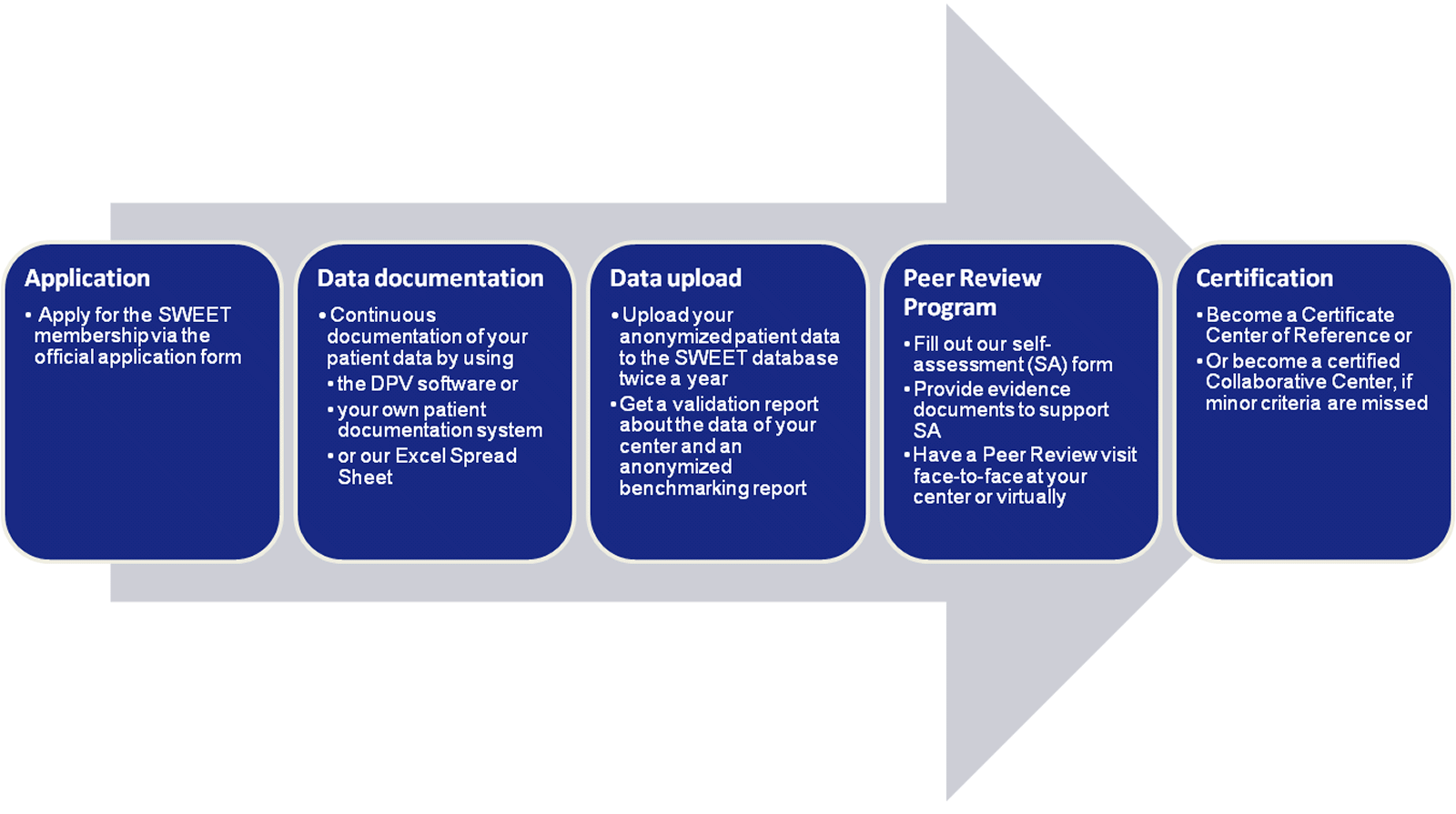Definition of member categories
Depending on the size of the center (number of patients) as well as their participation in SWEET, we have different member categories.
Centers with <150 pediatric patients
Centers that have less than 150 patients have lower membership fees and will be Associated Centers (AC). The complete process for smaller Centers is the following:

Centers with >150 pediatric patients
Centers that take care of more than 150 patients shall run through our Peer Review Program to become a SWEET certified center (Center of Reference or Collaborative Center) after they have uploaded their patients data. Before certification they are named “Center in Progress” (CiP1 or CiP2).

10 criteria
In order to be able to certify centers, clear requirements and criteria that go along our mission had to be defined. During the Peer Review process the applying centers show if they meet the following criteria:
1 - At least 150 patients under 18 years
- Appropriate capacities for diagnosing, following up and managing patients with evidence of good outcome where applicable
2 - Multidisciplinary team with pediatric diabetes expertise and experience
- Team: pediatrician and nurse with pediatric diabetes expertise, skilled dietitian, psychologist and / or social worker
- Fulfill national requirements for specialist education
- High level of expertise and experience, documented through publications, grants, or honorific positions, teaching and training activities
- Sufficient activity and capacity to provide relevant services at a sustained level of quality
- Capacity to provide expert advice, diagnosis or confirmation of diagnosis, to produce and adhere to good practice guidelines and to implement outcome measures and quality control
3 - Participation in network, registry or quality circle with data analysis
- Need to submit data twice a year to SWEET
- Need to participate in quality circle inclusive data analysis
- Involvement in epidemiological surveillance such as registries
- Close links and collaboration with other expert national and international Centers, and capacity to network
4 - Adherence to ISPAD guidelines / ISPAD membership
- Need to follow the ISPAD guidelines and at least one ISPAD member
5 - Outpatient / Inpatient diabetes services
- Outpatient diabetes services and inpatient services with confirmed access
6 - Contribution to research
- Regular printed publications, presentations
7 - Collaboration with patient associations
- Close links and collaboration with patient associations, where they exist
8 - Arrangements for patient referrals
- Appropriate arrangements for patient referrals from other countries
9 - National accreditation
- Confirmation that recognized accredited service within own country, if applicable
10 - Local printed education program for children
- Diabetes training program with education leaflets for children
Regardless of the member category, every center can participate in publications and research projects.